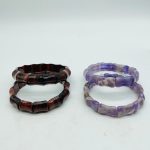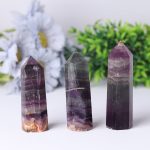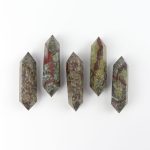The Earth’s crust is a vast and varied tapestry of rocks, each with its unique composition, texture, and origin. Understanding the different types of rocks can provide valuable insights into the planet’s history, geological processes, and mineral resources. This comprehensive rock identification chart serves as an indispensable tool for geologists, students, and anyone curious about the wonders of the natural world.

Igneous Rocks
Formed from the cooling and solidification of molten rock, igneous rocks are classified based on their texture and composition.
| Texture | Description | Example |
|---|---|---|
| Aphanitic | Fine-grained, not visible to the naked eye | Basalt |
| Aphanitic to porphyritic | Fine-grained matrix with larger crystals | Andesite |
| Porphyritic | Large crystals in a fine-grained matrix | Granite |
| Pegmatitic | Very large crystals | Pegmatite |
Sedimentary Rocks
Created from the accumulation and compaction of sediments, sedimentary rocks provide a glimpse into past environments and biological processes.
| Texture | Description | Example |
|---|---|---|
| Clastic | Composed of broken fragments of other rocks | Sandstone |
| Chemical | Formed from the precipitation of minerals from solution | Limestone |
| Organic | Composed of plant or animal remains | Coal |
Metamorphic Rocks
Formed when existing rocks are subjected to high temperatures and pressures, metamorphic rocks exhibit distinct textures and minerals.
| Texture | Description | Example |
|---|---|---|
| Foliated | Minerals arranged in parallel layers | Slate |
| Non-foliated | Minerals not arranged in layers | Marble |
| Granoblastic | Minerals interlocked with regular boundaries | Quartzite |
Physical Properties
In addition to texture and composition, the following physical properties can help identify rocks:
| Property | Description |
|---|---|
| Hardness | Resistance to scratching |
| Color | Reflects mineral composition |
| Specific gravity | Mass relative to equal volume of water |
| Luster | How light reflects off a surface |
Identification Techniques
Visual Examination: Examine the rock’s texture, color, and other physical characteristics.
Hand Lens: Magnify the rock to observe finer details.
Acid Test: Drop hydrochloric acid on the rock to identify carbonates (fizzing occurs).
Streak Test: Rub the rock on an unglazed porcelain plate to reveal its powdered color.
Applications in Geology and Mining
Rock identification plays a crucial role in various fields:
- Geology: Understanding geological formations, reconstructing ancient environments, and investigating plate tectonics.
- Mining: Identifying ore-bearing rocks, assessing mineral potential, and optimizing extraction methods.
- Engineering: Selecting rocks for construction materials, evaluating soil stability, and preventing geological hazards.
Future Applications
The future holds exciting possibilities for rock identification applications, such as:
- Environmental monitoring: Detecting pollution by analyzing rock chemistry.
- Space exploration: Identifying rocks on extraterrestrial bodies to study their history and potential resources.
- Artificial intelligence: Developing machine learning algorithms to automate rock identification.
Table 1: Igneous Rock Classification
| Composition | Texture | Example |
|---|---|---|
| Felsic | Aphanitic to porphyritic | Rhyolite, Andesite |
| Intermediate | Aphanitic to porphyritic | Diorite, Gabbro |
| Mafic | Aphanitic to porphyritic | Basalt |
| Ultramafic | Aphanitic | Peridotite |
Table 2: Sedimentary Rock Classification
| Type | Grain Size | Composition | Example |
|---|---|---|---|
| Conglomerate | Coarse (>2 mm) | Rounded fragments | Breccia |
| Sandstone | Medium (0.0625-2 mm) | Quartz, feldspar | Arkose |
| Shale | Fine (<0.0625 mm) | Clay minerals | Mudstone |
| Limestone | Chemical | Calcium carbonate | Travertine |
| Coal | Organic | Plant remains | Anthracite |
Table 3: Metamorphic Rock Classification
| Type | Texture | Composition | Example |
|---|---|---|---|
| Slate | Foliated | Clay minerals | Phyllite |
| Marble | Non-foliated | Calcium carbonate | Dolomite |
| Quartzite | Granoblastic | Quartz | Metaconglomerate |
Table 4: Physical Properties of Rocks
| Property | Value Range |
|---|---|
| Hardness | 1-10 (Mohs scale) |
| Specific gravity | 2-5 |
| Luster | Dull to adamantine |
| Color | Wide range |




























